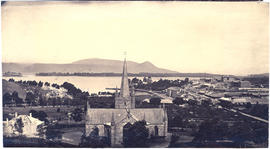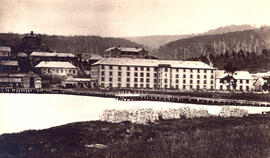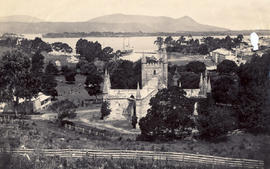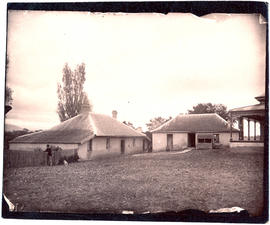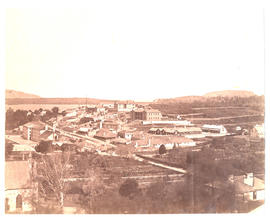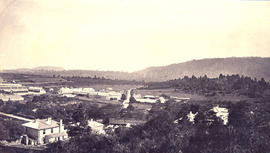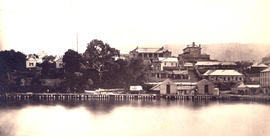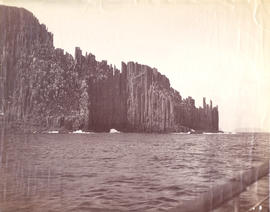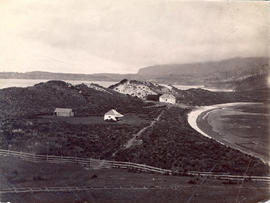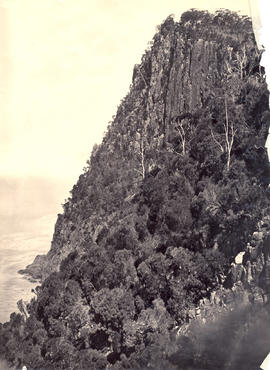Identity area
Reference code
Title
Date(s)
- n.d. (Creation)
Level of description
Item
Extent and medium
12 photographs
Context area
Name of creator
Biographical history
James Backhouse Walker (1841-1899), solicitor and historian, was born on 14 October 1841 in Hobart Town, son of George Washington Walker, shopkeeper, and his wife Sarah Benson, daughter of Robert Mather. Educated at the High School, Government Domain, Hobart, and at the Friends School, York, England, he was first employed as junior clerk in the office of T. D. Chapman and later in his father's Hobart Savings Bank. But in 1872 he took articles and on 7 July 1876 was admitted as barrister, solicitor and proctor of the Supreme Court of Tasmania. Senior partner in the firm J. B. Walker and Wolfhagen he was also an active councillor of the Southern Law Society. From 1877 he was a member of the Tasmanian Club. in 1890 he was appointed member of the first council of the new university, and in 1898 became its second vice-chancellor. Fro more information see : http://adb.anu.edu.au/biography/walker-james-backhouse-4786
Name of creator
Administrative history
Anson Brothers (Henry, Richard & Joshua) had photographic studios in Liverpool, Collins, and Elizabeth Streets between 1878 and 1891. Joshua Anson was an apprentice of H.H. Bailey
Name of creator
Biographical history
Henry Hall Baily was born in Tasmania but was trained at the London School of Photography in the early 1860s. A professional photographer, he exhibited in both Melbourne and Sydney while continuing to have a practice in Hobart, a practice his son, also called Henry, eventually took over. for more information see http://nla.gov.au/nla.party-1478047
Name of creator
Biographical history
John Watt Beattie (1859-1930), photographer and antiquarian, was born on 15 August 1859 at Aberdeen, Scotland, son of John Beattie, master house-painter and photographer, and his wife Esther Imlay, née Gillivray. After a grammar-school education he migrated with his parents and brother in 1878, and struggled to clear a farm in the Derwent Valley, Tasmania. He soon turned to his life's work. From 1879 he made many photographic expeditions into the bush, becoming a full-time professional in 1882 in partnership with Anson Bros whom he bought out in 1891. Gifted with both physical zeal and craftsman skills, he probably did more than anyone to shape the accepted visual image of Tasmania. An admirer of William Piguenit, Beattie stressed the same wildly romantic aspects of the island's beauty. His work included framed prints, postcards, lantern-slides and albums, and was the basis for a popular and pleasing set of Tasmanian pictorial stamps (in print 1899-1912).
Many of Beattie's photographs of people and places were published in the Cyclopedia of Tasmania, (1st edn. 1900). He also prepared sets of lecture slides on the topography and history of Tasmania and gave many lectures himself. He was interested in the history and made an important collection of items relating to Port Arthur &convict days, which was sold to the Queen Victoria Museum, Launceston in 1927. Another collection was secured for the Tasmanian Museum Hobart after Beattie's death through William Walker, the City paying £250. Some of Beattie's lectures and photographic notes were placed with the Royal Society's manuscripts on loan by the Museum. Some other papers of J.W. Beattie were bequeathed by him to the Royal Society for safe-keeping. These consist of copies of historical manuscripts and some original manuscripts, press cuttings and notes.
For more information see: http://adb.anu.edu.au/biography/beattie-john-watt-5171
Immediate source of acquisition or transfer
Content and structure area
Scope and content
Undated photographs of Port Arthur, Eaglehawk Neck, Cape Pillar Fluted Cape and Bruny Island. Photographed by Anson Bros., Baily & Beattie .
Appraisal, destruction and scheduling
Accruals
System of arrangement
Conditions of access and use area
Conditions governing access
Open for research
Conditions governing reproduction
This material is made available for personal research and study purposes under the University of Tasmania Standard Copyright Licence. For any further use permission should be obtained from the copyright owners. For assistance please contact Special.Collections@utas.edu.au
When reusing this material, please cite the reference number and provide the following acknowledgement:
“Courtesy of the UTAS Library Special & Rare Collections”


